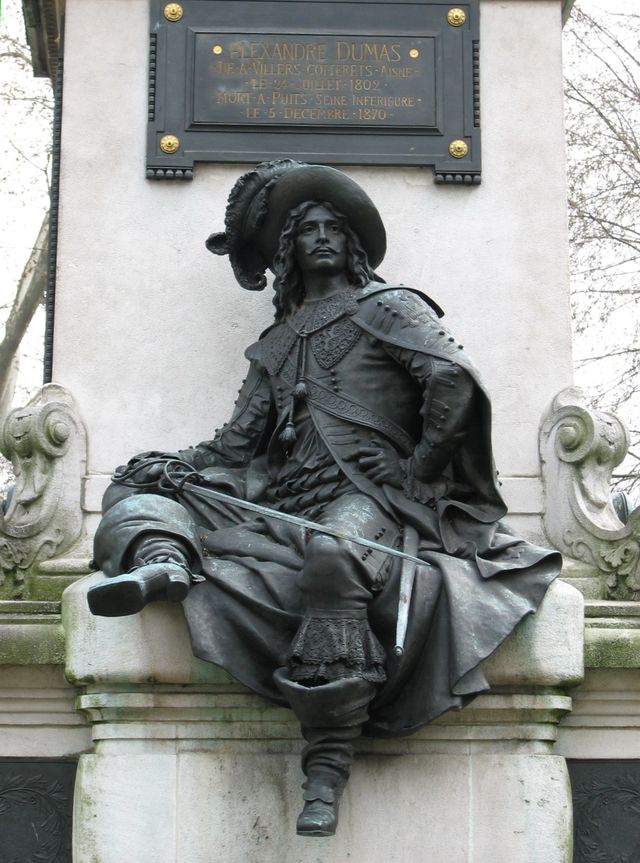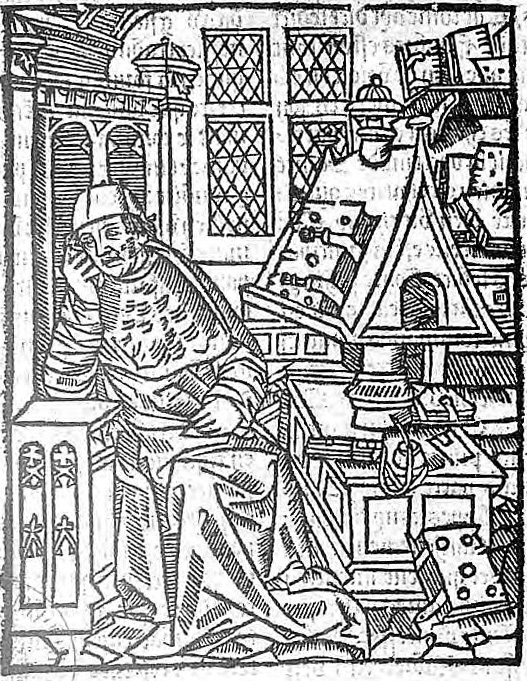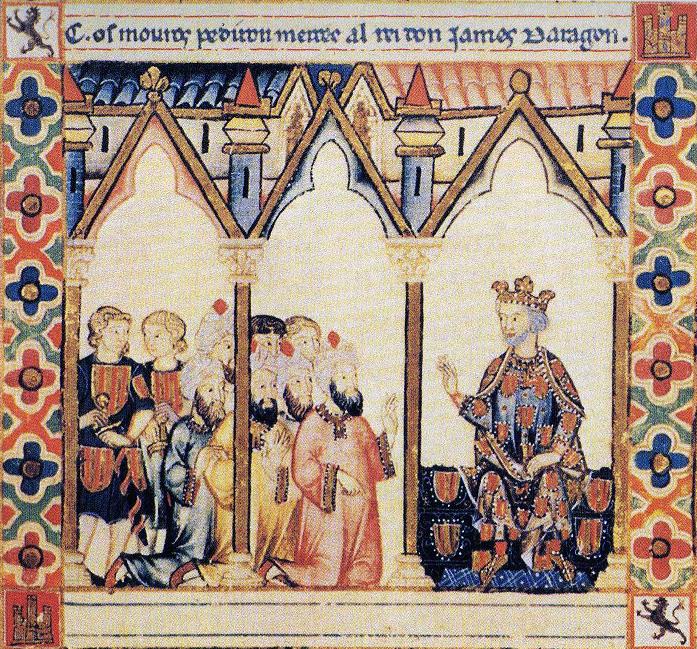|
Jaufri
''Jaufre'' (also called ''Jaufré'' or ''Jaufri'') is the only surviving Arthurian romance written in Occitan. A verse romance approximately 11,000 lines long, its main character is equivalent to Sir Griflet son of Do, a Knight of the Round Table known from other literature. Translations of ''Jaufre'' were popular on the Iberian peninsula; a version of the tale (from a Spanish redaction) even exists in Tagalog, the language of the Philippines. Synopsis Below is a summary based on the ms. A version, after Lavaud & Nelli's 1960 translation into modern French, and Ross G. Arthur's English translation. Chapter names approximately follow the latter. Prologue: 1–55 After a short eulogy to the court of King Arthur, the poet dedicates his work to the young King of Aragon, who has recently defeated God's enemies, possibly the Saracens in Spain. King Arthur's Court: 95–485 The poem proper begins. The court of King Arthur is assembled in the hall at (i.e. Carlisle) for the f ... [...More Info...] [...Related Items...] OR: [Wikipedia] [Google] [Baidu] |
Arthurian
King Arthur ( cy, Brenin Arthur, kw, Arthur Gernow, br, Roue Arzhur) is a Legend, legendary king of Great Britain, Britain, and a central figure in the medieval literary tradition known as the Matter of Britain. In the earliest traditions, Arthur appears as a leader of the post-Roman Celtic Britons, Britons in battles against Saxons, Saxon invaders of Britain in the late 5th and early 6th centuries. He appears in two early medieval historical sources, the ''Annales Cambriae'' and the ''Historia Brittonum'', but these date to 300 years after he is supposed to have lived, and most historians who study the period do not consider him a Historicity of King Arthur, historical figure.Tom Shippey, "So Much Smoke", ''review'' of , ''London Review of Books'', 40:24:23 (20 December 2018) His name also occurs in early Welsh language, Welsh poetic sources such as ''Y Gododdin''. The character developed through Welsh mythology, appearing either as a great warrior defending Britain from ... [...More Info...] [...Related Items...] OR: [Wikipedia] [Google] [Baidu] |
Morgan Le Fay
Morgan le Fay (, meaning 'Morgan the Fairy'), alternatively known as Morgan[n]a, Morgain[a/e], Morg[a]ne, Morgant[e], Morge[i]n, and Morgue[in] among other names and spellings ( cy, Morgên y Dylwythen Deg, kw, Morgen an Spyrys), is a powerful and ambiguous Magician (fantasy), enchantress from the legend of King Arthur, in which most often she and he are siblings. Early appearances of Morgan in Arthurian literature do not elaborate her character beyond her role as a goddess, a fairy , fay, a Witchcraft , witch, or a sorceress, generally benevolent and connected to Arthur as his magical saviour and protector. Her prominence increased as legends developed over time, as did her moral ambivalence, and in some texts there is an evolutionary transformation of her to an antagonist, particularly as portrayed in cyclical prose such as the ''Lancelot-Grail'' and the Post-Vulgate Cycle. A significant aspect in many of Morgan's Middle Ages, medieval and later iterations is the unpredictab ... [...More Info...] [...Related Items...] OR: [Wikipedia] [Google] [Baidu] |
Renaud De Beaujeu
Renaud de Beaujeu is the name of a medieval French author of Arthurian romance. He is known for only one major work, ''Le Bel Inconnu'', the Fair Unknown, a poem of 6266 lines in Old French that was composed in the late-twelfth or early-thirteenth century. Renaud left us his name at the end of this poem: 'Renals de Biauju, or, as usually written, Renaud de Beaujeu', In modern French he is known as Renaut de Beaujeu. ''Le Bel Inconnu'' survives in only one manuscript: Chantilly, Bibliothèque du Château, 472 (626). William Henry Schofield, a Harvard scholar, wrote of Renaud de Beaujeu in 1895: 'He is only known to us otherwise as the author of a song, one stanza of which is preserved in ''Le Roman de la Rose ou de Guillaume de Dole ''Guillaume de Dole'' (also known as ''(Le) Roman(s) de la Rose, or Guillaume de Dole'') is an Old French narrative romance by Jean Renart. Composed in the early 13th century, the poem is 5,656 lines long and is especially notable for the large n ...'' ... [...More Info...] [...Related Items...] OR: [Wikipedia] [Google] [Baidu] |
Alfred Elwes
Alfred Elwes (1819–1888) was a nineteenth-century British author of children's literature, academic, philologist, and occasional translator of French, Italian and Portuguese literature into English. He is perhaps best remembered for his translation of the medieval Arthurian romance '' Jaufry the Knight and the Fair Brunissende; a Tale of the Times of King Arthur''. Life and career Elwes was born in 1819 at Woolwich, Kent.Allibone, S. Austin. ''A Critical Dictionary of English Literature and British and American Authors Living and Deceased, from the Earliest Accounts to the Latter Half of the Nineteenth Century''. London, Trübner & Co., 1871, vol. III, p. 2781 (a digression under the entry for Joseph Wilson). In his education Elwes attained the degree of Doctor of Philosophy. He studied at Leiden in the Netherlands. Subsequently Elwes was Professor of English at Leghorn, Tuscany. His earliest known work, ''Il Nuovo Vergani'' (1845), a grammar in Italian for the study of ... [...More Info...] [...Related Items...] OR: [Wikipedia] [Google] [Baidu] |
Gustave Doré
Paul Gustave Louis Christophe Doré ( , , ; 6 January 1832 – 23 January 1883) was a French artist, as a printmaker, illustrator, painter, comics artist, caricaturist, and sculptor. He is best known for his prolific output of wood-engravings, especially those illustrating classic books, including 241 illustrating the Bible. These achieved great international success, and he is the best-known artist in this printmaking technique, although his role was normally as the designer only; at the height of his career some 40 block-cutters were employed to cut his drawings onto the wooden printing blocks, usually also signing the image. In all he created some 10,000 illustrations, the most important of which were "duplicated in electrotype shells that were printed ... on cylinder presses", allowing very large print runs as steel engravings, "hypnotizing the widest public ever captured by a major illustrator", and being published simultaneously in many countries. The drawings given to ... [...More Info...] [...Related Items...] OR: [Wikipedia] [Google] [Baidu] |
François Just Marie Raynouard
François Just Marie Raynouard (18 September 1761–27 October 1836) was a French dramatist and linguist. Raynouard was born at Brignoles in Provence, trained for the bar, and practiced at Draguignan. In 1791 he represented the department of Var in the Legislative Assembly, but after the fall of his party, the Girondists, he went into hiding. Discovered and imprisoned in Paris, he wrote his play ''Caton d'Utique'' (1794) during his imprisonment. In 1803 he won the Institut de France's poetry prize. ''Éléonore de Bavière'' and ''Les Templiers'' were accepted by the Comédie-Française. ''Les Templiers'' was produced in 1805, and, over the opposition of Geoffroy, was a great success. Elected to the Académie française in 1807, elected to the Académie des Inscriptions et Belles-Lettres in 1816, Raynouard was admitted ''secrétaire perpétuel'' of the Académie française in 1817. From 1806 to 1814 he represented the department of Var in the Corps législatif. Raynouard ... [...More Info...] [...Related Items...] OR: [Wikipedia] [Google] [Baidu] |
Renat Nelli
Renat Nelli (), who was born in Carcassonne, Aude in 1906 and died in 1982, was one of the major Occitan writers of the 20th century. In Vichy France, Nelli joined the French Resistance and in 1945 was one of the co-founders of the Institut d'Estudis Occitans. He also co-wrote the special issue of the ''Cahiers du Sud'' magazine on "the Genius of Òc and the Mediterranean Man" (1943), in which the three main lines of his literary mission stand out: the publication and translation of medieval Occitan poets; publishing his own poems; and being a critic. His collections are marked with sensuality and draw their inspiration from the mystical traditions of Cathars and trobador A troubadour (, ; oc, trobador ) was a composer and performer of Old Occitan lyric poetry during the High Middle Ages (1100–1350). Since the word ''troubadour'' is etymologically masculine, a female troubadour is usually called a ''trobairit ...s. He later tried his hand at prose and drama. Renat Nelli is ... [...More Info...] [...Related Items...] OR: [Wikipedia] [Google] [Baidu] |
Bibliothèque Nationale De France
The Bibliothèque nationale de France (, 'National Library of France'; BnF) is the national library of France, located in Paris on two main sites known respectively as ''Richelieu'' and ''François-Mitterrand''. It is the national repository of all that is published in France. Some of its extensive collections, including books and manuscripts but also precious objects and artworks, are on display at the BnF Museum (formerly known as the ) on the Richelieu site. The National Library of France is a public establishment under the supervision of the Ministry of Culture. Its mission is to constitute collections, especially the copies of works published in France that must, by law, be deposited there, conserve them, and make them available to the public. It produces a reference catalogue, cooperates with other national and international establishments, and participates in research programs. History The National Library of France traces its origin to the royal library founded at t ... [...More Info...] [...Related Items...] OR: [Wikipedia] [Google] [Baidu] |
Chrétien De Troyes
Chrétien de Troyes (Modern ; fro, Crestien de Troies ; 1160–1191) was a French poet and trouvère known for his writing on Arthurian subjects, and for first writing of Lancelot, Percival and the Holy Grail. Chrétien's works, including ''Erec and Enide'', ''Lancelot'', ''Perceval'' and ''Yvain'', represent some of the best-regarded of medieval literature. His use of structure, particularly in ''Yvain'', has been seen as a step towards the modern novel. Life Little is known of his life, but he seems to have been from Troyes or at least intimately connected with it. Between 1160 and 1172 he served (perhaps as herald-at-arms, as Gaston Paris speculated) at the court of his patroness Marie of France, Countess of Champagne, daughter of King Louis VII and Eleanor of Aquitaine, who married Count Henry I of Champagne in 1164. Later, he served the court of Philippe d'Alsace, Count of Flanders. Works Chrétien's works include five major poems in rhyming eight-syllable couplets. Fo ... [...More Info...] [...Related Items...] OR: [Wikipedia] [Google] [Baidu] |
Rita Lejeune
Rita Lejeune (1906–2009) was a Belgian philologist who became a leading expert in the study of medieval French literature. Life Lejeune was born in Herstal on 22 November 1906. Her father, Jean Lejeune, was a local government clerk and also a poet under the pen name Jean Lamoureux. He died in the 1918 influenza pandemic shortly before her twelfth birthday. After secondary school she became a student and then a researcher at the University of Liège, obtaining her doctorate in 1928 with a thesis on Jean Renart. She married Fernand Dehousse in 1929 and together they had two children. In the meantime she also studied at the École pratique des hautes études in Paris. In 1937 she began teaching at Liège University, and in 1954 she was appointed full professor in the department of Romance philology there. Her primary research interests were chansons de geste and chivalric romances, but she also developed an interest in Walloon literature. She died in Liège on 18 March 2009, and w ... [...More Info...] [...Related Items...] OR: [Wikipedia] [Google] [Baidu] |
James I Of Aragon
James I the Conqueror ( es, Jaime el Conquistador, ca, Jaume el Conqueridor; 2 February 1208 – 27 July 1276) was King of Aragon and Lord of Montpellier from 1213 to 1276; King of Majorca from 1231 to 1276; and Valencia from 1238 to 1276 and Count of Barcelona. His long reign—the longest of any Iberian monarch—saw the expansion of the Crown of Aragon in three directions: Languedoc to the north, the Balearic Islands to the southeast, and Valencia to the south. By a treaty with Louis IX of France, he achieved the renunciation of any possible claim of French suzerainty over the County of Barcelona and the other Catalan counties, while he renounced northward expansion and taking back the once Catalan territories in Occitania and vassal counties loyal to the County of Barcelona, lands that were lost by his father Peter II of Aragon in the Battle of Muret during the Albigensian Crusade and annexed by the Kingdom of France, and then decided to turn south. His great part i ... [...More Info...] [...Related Items...] OR: [Wikipedia] [Google] [Baidu] |





